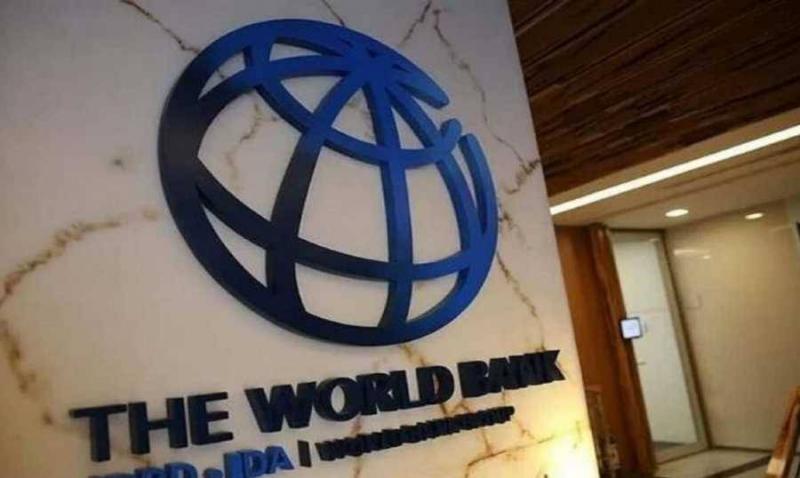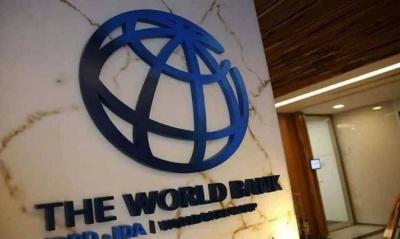The World Bank issued a report on the economic outlook for the Middle East and North Africa - April 2024, focusing particularly on regional conflict and its repercussions, as well as the rising levels of public debt in the region. The World Bank considered that the ongoing conflict in the region comes at a time when global economic growth is slowing for the third consecutive year after the COVID-19 pandemic. Furthermore, the report indicated that the economic performance of the Middle East and North Africa lags behind that of other emerging markets and developing economies, which are expected to grow by 4.4% in 2023 and 3.9% in 2024, compared to projected growth rates of 1.9% and 2.7% respectively for the Middle East and North Africa.
The report pointed out that the rise in oil prices following the war in Ukraine led to significant variations in performance between oil-exporting countries in the region (which benefited from increased oil revenues) and oil-importing countries that suffered, like the rest of the world, from declining growth. However, this gap has recently narrowed (as oil prices have dropped by 9.5% since October 2023), and it is expected that the gap will remain minimal in the future.
**Expectations for Lebanon**
Regarding Lebanon, the report projected that the country would record an economic growth rate of 0.5% in 2024, compared to an economic contraction of 0.2% in 2023 and 0.6% in 2022. It is also expected that the average growth of real GDP per capita will improve from 1.2% in 2022 to 2.4% in 2023 and 3.1% in 2024. The World Bank also predicted that the current account deficit in Lebanon would remain high at 10.4% of GDP compared to 11% in 2023 and 32.7% in 2022, and that Lebanon would achieve a balance in the general budget in 2024 compared to a surplus of 0.5% of GDP in 2023 and a deficit of 2.9% in 2022.
Regarding the Gaza war, the report commented that its impact was devastating on the sector (severe civilian losses, a displacement crisis, significant damage to infrastructure and buildings, and a decline in GDP by 86% in the last quarter of the year). However, the impact of this war was not uniform across countries in the Middle East and North Africa. Specifically, the report stated that some countries with low economic ties to Palestine (such as Algeria, Libya, Morocco, and Gulf Cooperation Council countries) hardly felt any repercussions, except for an increase in the prices of basic commodities. On the other hand, neighboring countries felt the brunt of the war, particularly in terms of international trade and tourism sectors. In Lebanon, the war caused significant damage to infrastructure, with a large portion of agricultural land burned and polluted (noting that 20% of the cultivated land in the country is located in the south). In agricultural terms, the greatest impact was on olive cultivation (which represents 7% of total agricultural production in Lebanon), with damage to approximately 100,000 square meters of olive orchards. It goes without saying that the tourism sector was significantly affected by the war, with the number of incoming air travelers dropping by more than 20% year-on-year during October and November. In the same context, the report noted that before the conflict, Lebanon was expected to achieve some economic growth in 2023, but forecasts were updated after the outbreak of the Gaza war to reflect an actual contraction of 0.2%.
**Rising Public Debt**
The World Bank highlighted the issue of rising public debt among oil-importing countries in the Middle East and North Africa, commenting that these countries will face difficulties in addressing the crisis in the near future. Specifically, the report indicated that 16 out of 19 countries in the Middle East and North Africa had experienced an increase in public debt as a percentage of GDP between 2013 and 2020, with an average annual increase of 4 percentage points.
Locally, the report stated that Lebanon had already been suffering from a high debt-to-GDP ratio before the crisis, reaching 155% in 2018 compared to 135% in 2013. The report added that the debt-to-GDP ratio increased again by about 17 percentage points to 172.3% in 2019 with a 7% economic contraction and by about 22 percentage points between 2020 and 2023 to reach 201%, where lower inflation levels partially mitigated the sharp increase in the value of debts denominated in foreign currency due to the depreciation of the local currency.
**Gulf Cooperation Council Countries**
Additionally, the World Bank noted that the growth gap between Gulf Cooperation Council countries and oil-importing countries in the Middle East and North Africa reached 5.6 percentage points in 2022, while it is expected to be just 0.9 percentage points in 2024. The report also commented that despite falling oil prices, oil-exporting countries in the Middle East and North Africa are expected to register current account surpluses (7.5% of GDP in 2024 compared to 8.4% in 2023) and budget surpluses (0.1% of GDP in 2024 compared to 0.5% in 2023). In contrast, the situation is not the same for oil-importing countries, which are expected to record a double deficit in 2024. Specifically, these countries are anticipated to report a current account deficit of 3.4% of GDP in 2024 (compared to a deficit of 1.8% of GDP in 2023), with a widening budget deficit from 5.5% of GDP in 2023 to 5.7% in 2024.




